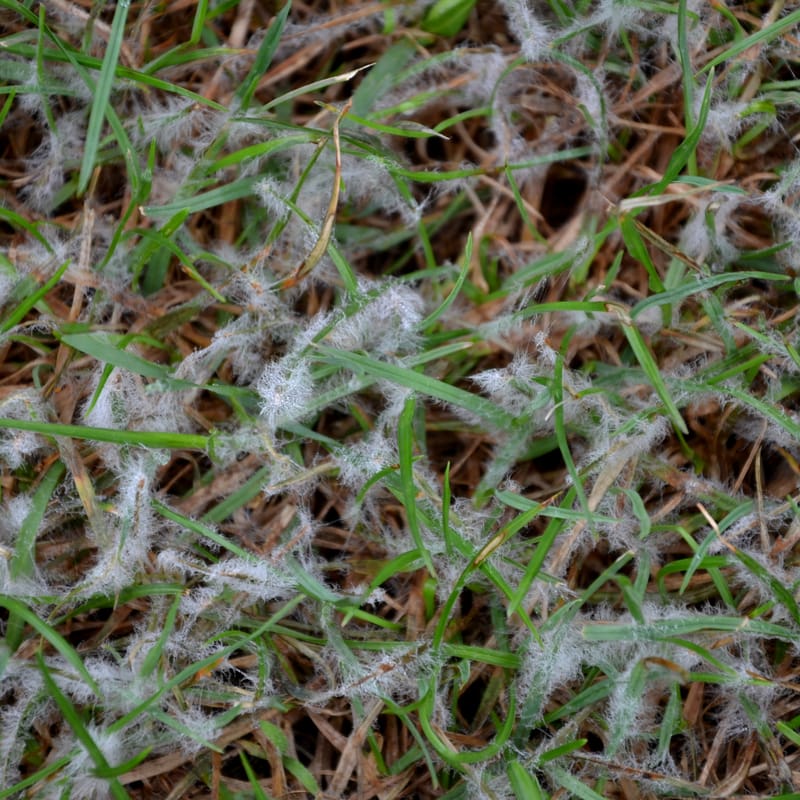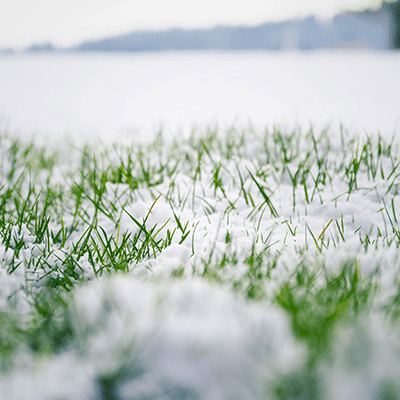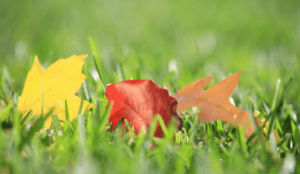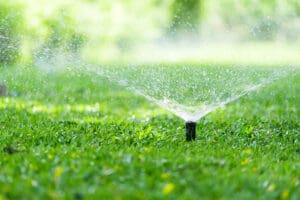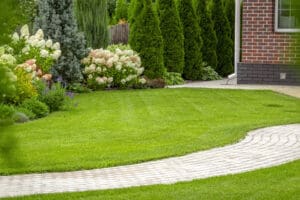Of all the microscopic pests that ruin our lawns, snow mold might be the trickiest. Since it occurs over winter, hidden beneath the snow, most people don’t know their lawn is in trouble until spring. By that time, the damage is already extensive. While this sounds disastrous, there are things you can do to mitigate the damage caused by snow mold. Discover how to identify this annoying disease and prevent it from returning in the future.
Summary Points
ToggleWhat Is Snow Mold
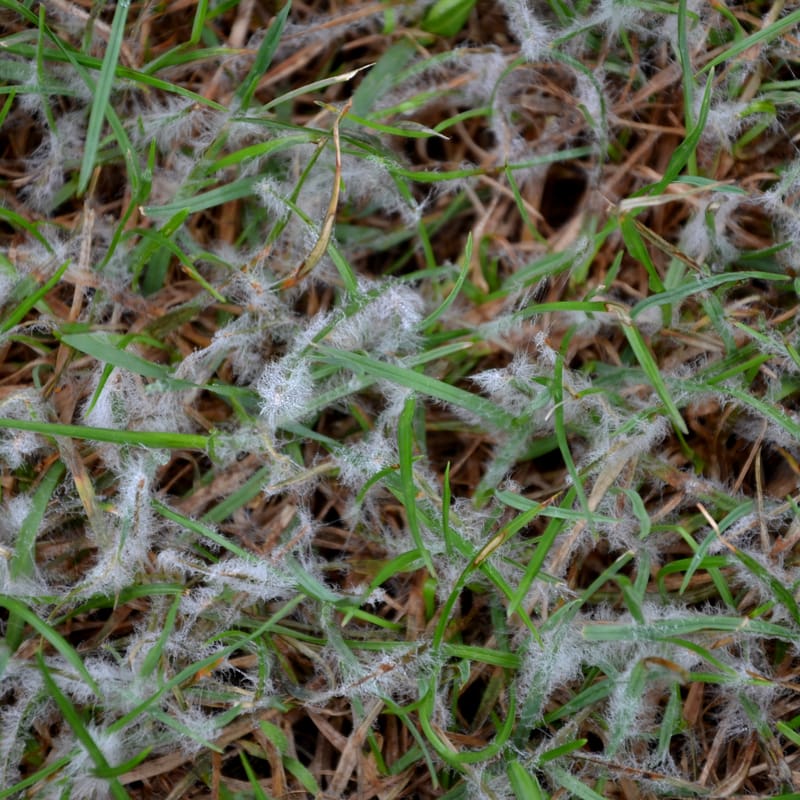
You might be thinking: doesn’t everything die in the winter? Unfortunately, no. Just as igloos keep occupants warm, so too does snow creates insulation for the lawn. The mold that causes fungus will use this protective insulation to thrive – even during the height of winter. And when all that snow disappears in spring, you’ll be left with dead patches of grass.
When Does Snow Mold Occur
Snow mold occurs when the ground hasn’t frozen solid yet, but we get heavy or deep snowfall. The weight of the snow pushes down on the grass, creating a stressful situation for your lawn. Because of that residual warmth from the not-completely-frozen earth, the air pockets under the snow create ideal temperatures for microscopic snow mold to thrive. If there are grass clippings, fallen leaves, or thatch build-up, all those things will increase the likelihood that snow mold will appear.
What Does Snow Mold Look Like
Snow mold comes in two varieties: gray snow mold, also known as Typhula blight, and pink snow mold, also known as Microdochium patch or Fusarium patch. Both types of snow mold create straw-colored circular patches in your lawn, and these damaged areas range from a couple of inches in width up to several feet. In addition to being straw-colored, the patches will appear matted down and even covered with a layer of crust. As you might have deduced from the name, gray mold creates whitish-gray patches while pink snow mold appears pinkish. While neither is ideal to have in your lawn, pink snow mold is more aggressive. And unlike gray snow mold, pink can actually kill the crown and root system of the turfgrass – not just the blades above the surface.
How To Treat Snow Mold In Your Lawn
The best way to avoid snow mold problems is by keeping your lawn as healthy as possible. Opting for an organic lawn care service, like the program provided by Top Lawn, keeps your grass healthy and is gentler on the lawn than traditional synthetic chemicals. Aside from fertilizing your lawn each season, you should also:
- Mow properly. Tall blades of grass attract not only microscopic problems like snow mold but also mosquitoes, fleas, and ticks.

- Collect fallen leaves. Whether you use the rake, leaf blower, or lawnmower, get those dead leaves off the lawn! Otherwise, you’re just asking for a mold problem.
- Avoid dumping snow in large piles. Spreading it out evenly as you plow or shovel will prevent pressure points on the lawn.
Unfortunately, even the healthiest, most well-cared-for lawns can fall victim to snow mold. So if preventative measures have failed, a topical fungicide application will do the trick. Ideally, you should apply it every November – before the first frost. It’s also a good idea to apply it in spring. And each spring and fall, give your lawn a good raking to break up any accumulated thatch, which contributes to the growth of microscopic organisms.
Address Damaged Areas
Overseeding your lawn will restore any damaged areas lost to snow mold. Top Lawn uses only the highest quality seed blends, and we’re happy to help you choose which varietals are best for your lawn. The beauty of overseeding is that you don’t have to rip up the entire lawn – unless you really want to. Instead, the seeds are dispersed where they will germinate and blend in with the existing lawn.
Prevent Snow Mold With Top Lawn
The best way to prevent snow mold is by maintaining a healthy lawn year-round. We can’t control how much snow Mother Nature sends us, but we can control how well your lawn is cared for. The experts at Top Lawn offer organic lawn care to boost the health and appearance of your turfgrass. Grass with sufficient nutrients and a robust root system is less likely to fall victim to molds, mildews, and fungi. Let’s put our lawn fertilization to work for you! Give us a call at (248) 956-6022, or you can reach us online here.
To learn more about caring for your lawn and garden, be sure to check out our blog page: https://toplawn.com/blog/

